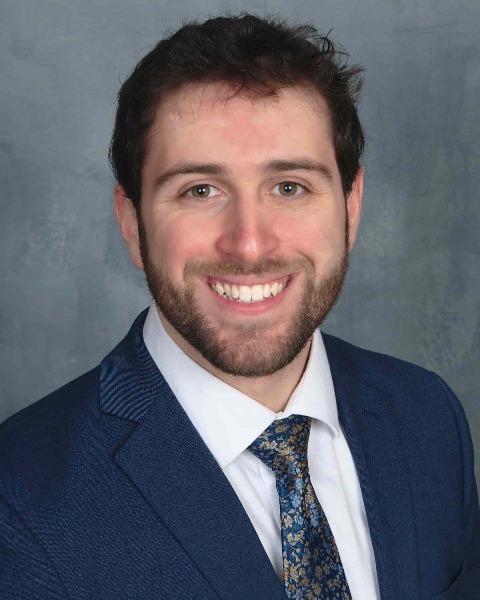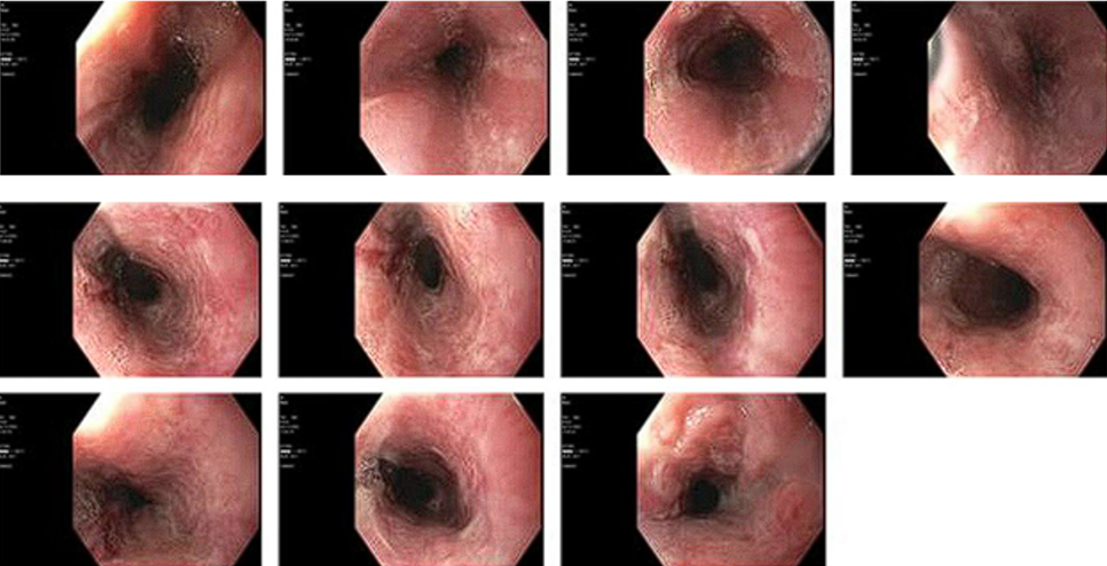Monday Poster Session
Category: General Endoscopy
P3036 - Survival After Ingestion of Sodium Metasilicate: A Case Report
Monday, October 27, 2025
10:30 AM - 4:00 PM PDT
Location: Exhibit Hall

Jason Orciuolo, DO
Bayhealth Hospital
Dover, DE
Presenting Author(s)
Jason Orciuolo, DO, Zaid Hanafi, MD
Bayhealth Hospital, Dover, DE
Introduction: Sodium Metasilicate is a caustic, alkaline agent (pH 12.5), that can cause serious injury. It can cause skin, eye, and respiratory tract burns when swallowed, inhaled, or exposed to vapor. There are only two documented cases of exposure, both of which have caused death due to either respiratory or gastrointestinal compromise. Based on these reports and our patient, it appears that the severity of injury from ingestion is directly correlated with quantity consumed and even at small doses, consequences of ingestion can be severe.
Case Description/
Methods: Patient is an 18yo male with a past medical history of MDD and SI. Patient initially presented to the ED with complaints of sore throat, abdominal pain, and chest tightening. Patient was vomiting upon arrival to the ED. En route, the patient reported ingesting 1mL of sodium metasilicate prior to the start of his symptoms. Initial imaging with abdominal X-ray and CT of the chest, abdomen, and pelvis were remarkable for stage 2 esophageal wall edema and no other acute process. Emergent EGD was performed and showed ulceration, erythema, and congestion throughout the wall of the esophagus and stomach compatible with caustic injury, classified as Zagar Grade 2B (Figures 1 and 2). Patient was kept NPO for at least 48 hours to allow for bowel rest/healing and started on 40mg PPI BID which would be continued until reevaluated endoscopically 2 months later. After 48 hours of improving symptoms, he was switched to clear liquid diet. His diet was then advanced as tolerated and was later discharged to inpatient psychiatric facilities.
Discussion: Sodium metasilicate ingestion and poisoning is rare and the effects of its ingestion can be devastating. The two prior reported cases resulted in death. Both of which, involved ingestion of approximately 150mL of sodium metasilicate, a significant increase when compared to our case, with just 1mL ingested. The first reported case reported a very quick time of death, being about 1-1.5 hours after ingestion and aspiration. The second case led to death three months later from malnutrition due to complications with his enteral feeding device secondary to pyloric stenosis. This suggests that outcomes from sodium metasilicate poisoning are directly correlated to amount consumed. This case also shows that a small amount of sodium metasilicate, 1mL in this case, can cause a great deal of harm, indicating that its ingestion should be taken seriously and be treated emergently.

Figure: Figure 1: Diffuse continuous ulceration, erythema, and congestion of the mucosa was noted in the whole esophagus. Compatible with caustic injury Zagar Grade 2B.

Figure: Figure 2: Diffuse, continuous ulceration, erythema and congestion of the mucosa was noted in the whole stomach. Consistent with caustic injury Zagar Grade 2B.
Disclosures:
Jason Orciuolo indicated no relevant financial relationships.
Zaid Hanafi indicated no relevant financial relationships.
Jason Orciuolo, DO, Zaid Hanafi, MD. P3036 - Survival After Ingestion of Sodium Metasilicate: A Case Report, ACG 2025 Annual Scientific Meeting Abstracts. Phoenix, AZ: American College of Gastroenterology.
Bayhealth Hospital, Dover, DE
Introduction: Sodium Metasilicate is a caustic, alkaline agent (pH 12.5), that can cause serious injury. It can cause skin, eye, and respiratory tract burns when swallowed, inhaled, or exposed to vapor. There are only two documented cases of exposure, both of which have caused death due to either respiratory or gastrointestinal compromise. Based on these reports and our patient, it appears that the severity of injury from ingestion is directly correlated with quantity consumed and even at small doses, consequences of ingestion can be severe.
Case Description/
Methods: Patient is an 18yo male with a past medical history of MDD and SI. Patient initially presented to the ED with complaints of sore throat, abdominal pain, and chest tightening. Patient was vomiting upon arrival to the ED. En route, the patient reported ingesting 1mL of sodium metasilicate prior to the start of his symptoms. Initial imaging with abdominal X-ray and CT of the chest, abdomen, and pelvis were remarkable for stage 2 esophageal wall edema and no other acute process. Emergent EGD was performed and showed ulceration, erythema, and congestion throughout the wall of the esophagus and stomach compatible with caustic injury, classified as Zagar Grade 2B (Figures 1 and 2). Patient was kept NPO for at least 48 hours to allow for bowel rest/healing and started on 40mg PPI BID which would be continued until reevaluated endoscopically 2 months later. After 48 hours of improving symptoms, he was switched to clear liquid diet. His diet was then advanced as tolerated and was later discharged to inpatient psychiatric facilities.
Discussion: Sodium metasilicate ingestion and poisoning is rare and the effects of its ingestion can be devastating. The two prior reported cases resulted in death. Both of which, involved ingestion of approximately 150mL of sodium metasilicate, a significant increase when compared to our case, with just 1mL ingested. The first reported case reported a very quick time of death, being about 1-1.5 hours after ingestion and aspiration. The second case led to death three months later from malnutrition due to complications with his enteral feeding device secondary to pyloric stenosis. This suggests that outcomes from sodium metasilicate poisoning are directly correlated to amount consumed. This case also shows that a small amount of sodium metasilicate, 1mL in this case, can cause a great deal of harm, indicating that its ingestion should be taken seriously and be treated emergently.

Figure: Figure 1: Diffuse continuous ulceration, erythema, and congestion of the mucosa was noted in the whole esophagus. Compatible with caustic injury Zagar Grade 2B.

Figure: Figure 2: Diffuse, continuous ulceration, erythema and congestion of the mucosa was noted in the whole stomach. Consistent with caustic injury Zagar Grade 2B.
Disclosures:
Jason Orciuolo indicated no relevant financial relationships.
Zaid Hanafi indicated no relevant financial relationships.
Jason Orciuolo, DO, Zaid Hanafi, MD. P3036 - Survival After Ingestion of Sodium Metasilicate: A Case Report, ACG 2025 Annual Scientific Meeting Abstracts. Phoenix, AZ: American College of Gastroenterology.
